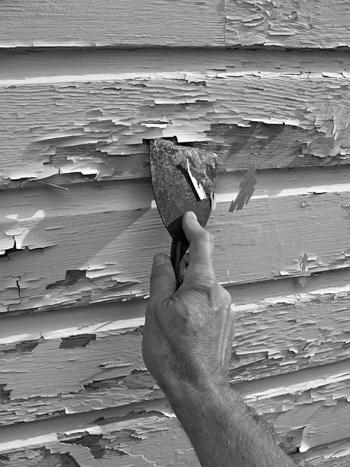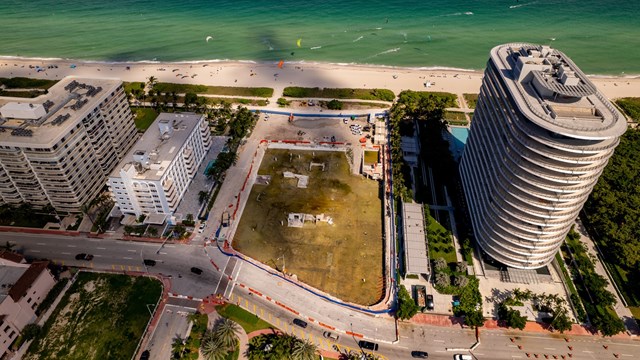
If something’s broken, you fix it. If it’s worn out, you replace it. It sounds like a simple equation, but when it comes to capital improvements or renovation projects in cash-strapped times, it can be a case of easier said than done.
As many HOAs’ fiscal situations remain shaky, some boards and managers are looking at putting off scheduled maintenance projects until things are a little more stable. They are seeking to postpone that siding, roofing, decking, or paving project for a year or so, in the hope that their books will be a little further in the black.
“Deferred maintenance,” as it is known in the real estate industry, is not a strategy unique to this particular recession—even in the best of times, associations are sometimes forced to shuffle their priorities to better reflect their finances. But, since by definition deferring maintenance means not fixing something that needs it, it’s an approach that should be employed carefully, so that boards and managers don’t find themselves dealing with upset (possibly litigious) residents, declining property values, or safety hazards.
Also, the cost of some projects rises exponentially if not handled in a timely fashion. That’s why it is vital that boards and associations get an expert opinion (which usually does not mean the brother-in-law of a board member) on which projects can safely be postponed, and which need to be dealt with immediately—no matter how many zeroes are attached to the price tag.
This article will lay out some of the risks involved in putting off maintenance and improvement projects, as well as offering a few tips on how condominium associations can stretch their reserve fund dollars.
Set Priorities
The first step in determining where your building or HOA can afford to cut costs is to prioritize. All of the experts interviewed for this article agreed that there are two areas that absolutely should not be deferred: anything that impacts the structural integrity of the building, and anything involving residents’ safety. Letting these truly non-negotiable areas suffer from inadequate maintenance—even if it’s done with the best of intentions—has the potential to compound physical problems with legal ones, causing even larger headaches, says Scott A. Breyer, a marketing and sales associate with Water R. Breyer Real Estate Company in Oradell. He cites a building he worked with where residents formed a class action suit against building administrators for not providing essentials like heat, and not keeping fire escapes up to code.
“It’s bad stuff,” he says. “Safety is the most important thing; fire escapes, walkways, parking areas and snow removal—anywhere where someone can get hurt. Fire escapes are very important to keep up on. If there’s a fire and your residents can’t get out because of your negligence, it can lead to a tragedy. After that, it’s the necessities of living—especially things like heat.”
Ralph Noblin, PE, president of Noblin & Associates LC, a structural engineering firm located in Bridgewater, Massachusetts agrees—and adds water infiltration to the list of issues that must be addressed the moment it’s detected. “Water can lead to wood rot and mold and much larger [problems] than may appear on the surface,” he says. “Some boards are kidding themselves saying, ‘We’re just putting up with a bad-looking building.’ If water gets inside, you can go from a siding project to a reconstruct-the-building project.”
Noblin goes on to say that other immediate safety issues can include uneven or badly cracked sidewalks that pose a tripping hazard, worn-out stair railings, and dead tree limbs that could fall on a person or vehicle. And then there are decks. “Decks are scary,” says Noblin, adding that they get his vote for the top item he wishes no one would ever defer, because of their potential for causing injury to residents and damage to abutting buildings when allowed to deteriorate. “I have nightmares about decks.”
If delaying a project won’t adversely impact residents’ comfort or safety, most experts agree that it’s okay to put it off if the money just isn’t there. Purely aesthetic upgrades like carpeting or wallpaper in the common areas or clubhouse can usually wait a while, and projects such as exterior painting and repaving parking lots and driveways can often be deferred as well, although in the case of wood siding, this can’t be put off for much over a year or two without risking mold and mildew issues, and badly pot-holed or buckled asphalt poses trip-and-fall risks, as mentioned above.
Noblin points out that the downside to deferring beautification projects is that they’re usually less expensive than bigger capital projects and thus don’t save as much money, and it’s possible for a deferral to backfire if it results in an erosion of an HOA’s curb appeal and unit resale values.
Capital Idea
If your HOA administrators have no idea how long the average roof should last, or what condition your building’s HVAC is in, it’s impossible to plan intelligently for the future, or prioritize current budgetary items. One way to get a nearly crystal-clear picture of how your association’s maintenance needs stack up against its financial limitations is to undertake a reserve study.
In the most basic terms, a reserve study lets boards and managers know when elements common to an entire co-op or condo community must be repaired and replaced, and provides an estimate of how much that work will cost. It also includes a plan for how to pay for those repairs by giving an estimate of how many dollars need to be set aside each year to meet pre-determined levels of funding.
According to Daniel Rush, a reserve specialist with Toms River-based engineering firm Flannery Webb & Hansen, “An engineer will assess the common elements of the community and put together a funding plan so that they can have adequate money to replace items such as roofs, roadways, siding, lighting—things like that. We make recommendations as to what a budget needs to be; how much money a unit owner would need to contribute each month in order to keep their reserves healthy and funded adequately.”
Reserve studies provide associations with a tool they can use to plan for the future,” says Nancy Hastings of MAMCO Property Management in Mt. Laurel. “Getting a reserve study done forces boards and management to take a detailed look [at the future] so there aren’t any surprises and no need for special assessments.”
Mitch Frumkin, a reserve specialist and president of Kipcon, Inc., an engineering consultant in North Brunswick, says that once the reserve specialist has gathered all the relevant information about the association, he or she will put together a detailed, 30-year proposed repair schedule summary, tackling everything from pavement seal coating, landscaping and aluminum downspouts to shingles, decks and doors. Once a draft of the schedule is completed, the board will review it and comment before a final report and funding plan are created.
The funding plan comes together by taking the cost of each item that will need repair or replacement, then determining how much money needs to be set aside each year to cover those costs. “For example, think of the most expensive thing you’ll have to replace in any given year,” says Frumkin. “Maybe it’s a $100,000 boiler. You want to make sure you always have enough funds available to pay for that boiler. For each association, though, the threshold will be different.”
With a solid reserve study in hand, associations can better plan for the future. That future, however, should also include regular reserve study updates to account for changing circumstances. “You may be able to save money if something is not degrading as fast as initially estimated,” says Hastings. If a roof is lasting longer than expected, the cost of repairing it may get adjusted or pushed back on the calendar. “Conversely, really bad winters may have worsened concrete walkways, meaning they need to be repaired sooner,” he adds. Knowing that ahead of time means avoiding costly and unpopular special assessments later.
An Ounce of Prevention
Regular maintenance and repairs—as spelled out in a reserve study, or recommended by an HOA’s service professionals—can make deferring things for a year or two a more realistic possibility, say the professionals. If your HVAC has been regularly serviced and kept in top condition, it may be possible to get 25 or 30 years out of it rather than the usual 20, for example. If you have a flat roof, regular maintenance might buy you another five years—or 25 percent of the expected useful life, says Noblin. Wrought-iron fences that have been regularly painted could last three times as long as those that are left to rust. “Today’s $500 issue is tomorrow’s $5,000 issue,” agrees Hastings.
And when that $5,000 issue finally comes home to roost, it can be cause for major alarm to boards and residents alike.
Noblin says he once did a reserve study for a Connecticut condominium that had $350,000 in its reserve fund. That’s hardly petty cash—except that the estimated cost of repairs the HOA needed was nearly $6 million. Another condo he worked with found itself in a similar situation, with an estimate of about $300,000 worth of roofing and $75,000 worth of new pavement needed. Needless to say, both situations were the cause of many sleepless nights for those boards.
If your association faces immediate, necessary repairs and there just isn’t enough money to cover the cost of completing them, community administrators have some tough decisions to make. When there aren’t adequate funds to achieve this in the reserve, says Breyer, “There needs to be an assessment.”
Nobody likes assessments—boards usually hate levying them, and residents hate having to pay them—but in an emergency situation, there’s often no choice but to pull the trigger and do it.
“The problem now is that when you have an economy like this, some residents stop paying mortgages and maintenance fees,” Breyer continues, “and the condo board and management have no alternative but to take the unpaid fees from the other owners.”
Even then, it’s possible to structure an assessment to lessen the burden on residents who may be struggling themselves, says Nobln. In the case of the HOA needing the new roof and paving, he says its largely working-class owners couldn’t just write out a check for several thousand dollars apiece, so the condo decided to just patch and seal the cracks in the pavement as a short-term solution, and to stagger replacing the roofs over the next three years. The owners will only face a special assessment in the year when their particular building gets a new roof.
As painful as it is to spend money on repairs, especially if it looks like it can be put off just a little longer, it’s imperative to enlist the help of qualified professionals to formulate a plan, and stick to that plan. “A reserve study is a budgeting and planning tool,” Frumkin says. “A manager should look at it every year at the beginning of the budget cycle and spend the money that needs to be spent and make the repairs that need to be made. The longer people wait, the more expensive things will be.”
Yvonne Zipp is a freelance writer for New England Condominium, a Yale Robbins’ publication.






Leave a Comment